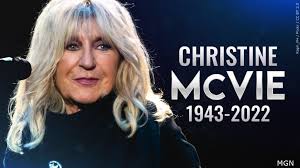 For corporations, navigating the political landscape has become an increasingly difficult task. While being admonished to ‘stay in their lane’ by some; businesses are just like their stakeholders, impacted by the ever-changing political miasma. When this new reality is coupled with the new levels of transparency in companies, which are only amplified by social media, a company can find itself embroiled in very public controversies with one or more stakeholder groups. As these situations occur, Chief Compliance Officers (CCOs) and compliance professionals will be called upon to help companies navigate this fraught process.
For corporations, navigating the political landscape has become an increasingly difficult task. While being admonished to ‘stay in their lane’ by some; businesses are just like their stakeholders, impacted by the ever-changing political miasma. When this new reality is coupled with the new levels of transparency in companies, which are only amplified by social media, a company can find itself embroiled in very public controversies with one or more stakeholder groups. As these situations occur, Chief Compliance Officers (CCOs) and compliance professionals will be called upon to help companies navigate this fraught process.
I was therefore intrigued by a recent Harvard Business Review (HBR) article, entitled Strategy in a Hyperpolitical World, where authors Roger L. Martin and Martin Reeves opined on how companies can make smart choices when values clash. Some recent examples the authors pointed to included “when Delta stopped offering discounts to NRA members following a 2018 school massacre in Florida, it was threatened with the withdrawal of fuel subsidies in Georgia. When Disney spoke up on LGBTQ+ rights in Florida, it lost its special governance status and rights in the state. When H&M voiced concerns about cotton sourcing and human rights in China, its revenues in that country plummeted. When the Ukraine crisis broke, McDonald’s was forced to exit the business it had painstakingly built in Russia over a 30-year period.”
This change for corporations has been percolating for some time. As with many changes over the past few years, this politicizing of corporations accelerated during Covid-19 and the Russian invasion of Ukraine. In addition to the increased amplification through social media noted above, the authors believe, “the workplace has become the main vehicle for socialization and self-expression. As employees seek to express their identities and beliefs at work, they increasingly expect that their companies will support the issues they care about.” Companies have for years wanted this type of commitment and engagement with its employees but with all these changes, new risks are presented. Moreover, “many CEOs who have taken a stance on social issues say the impetus was that their employees expected and lobbied for it.” In other words, as the authors believe, the corporate playing field has expanded beyond simply justifying strategic decisions in purely business terms.
How can compliance help a company navigate through all of this? The authors state, “To make and implement the best strategic choices in this environment, leaders will have to (1) develop robust principles to guide strategic choices, (2) address ethical issues early, (3) consistently communicate and implement their choices, (4) engage beyond the industry to shape the context, and (5) learn from mistakes to make better choices in the future.” This is a process that can be facilitated by the corporate compliance function, and I have adapted the authors process for compliance.
Develop Robust Principles
The authors believe the “first step is understanding the salient social and political issues for your company. The second step is envisioning where and how those issues might intersect with your business and the choices that they imply. The third step is hearing and understanding the opinions of your employees on those issues—because, as we’ve noted, they are often the reason that companies take a position on political issues.” They caution the principles must be broad enough “to apply across the major sources of political tension to which a company is likely to be exposed” and they should be clear. Finally, they should be easily audited.
Address Ethical Issues Early
Admittedly, “anticipating and shaping ethical challenges requires a delicate balancing act” but companies are now required to be more nimble and more agile. The authors note, “Individual companies may be able to move earlier and with greater control, but eventually complex issues may necessitate collective action, often initiated by a market leader.” An organization should assess where and how it should operate as well as its “need to anticipate, preempt, and shape nascent ethical challenges. That may require a high degree of creative problem-solving, but it often garners outsize public goodwill and strategic advantages for early movers. Once an issue has become front-page news, political camps will be entrenched, and the company’s room for maneuver will be limited.” This was seen most strikingly in the wake of the Russian invasion of Ukraine where companies were presented with a stark choice from their employees and other stakeholders; support Democracy or suffer the impacts of being pro-Putin. Companies who quickly responded were also in a much better position when the inevitable economic and trade sanctions began to be levied.
Consistently Communicate and Implement Choices
It is critical that principles should “be communicated to and understood by all employees. Because they will influence the expectations of stakeholders outside the company, they should also be publicly transparent.” As the Fair Process Doctrine implies, “Principles are credible only if they are consistently applied.” The authors interpret this to mean “they must be part of the everyday making of business decisions, not simply called up in response to pressure after a situation has exploded.” But just as senior leaders must not simply “Talk the Talk but Walk the Walk”, principles which only “inform communications but not action will not be credible over time or effective in navigating risk.” A CCO should use its company’s principles to “engage with and solve issues preemptively and collaboratively whenever possible. A company standing against corruption will have a greater impact if it works with other stakeholders to address that issue and improve the context—even if, at the end of the day, a decision about whether to stay in the business in question or exit it is required.”
Engage Beyond the Industry
If there has been one change around principles, it has been that some issues are larger than any one company can impact. Some issues are beyond even an entire industry and businesses “need to work with civil society and government on the hardest and most deeply entrenched issues to effect change.” Failing to do so can lead to “accepting the unpredictability of an endless series of ad hoc responses or having regulation forced on the industry owing to insufficient impact from their own efforts. And there are important new issues around which to build consensus.” Perhaps the clearest example of this is human trafficking and human slavery in the business context and the passage of the Uyghur Forced Labor Prevention Act (UFLPA). This legislation sailed through the US Congress, almost unanimously, as many corporations had taken stands on the abuse of such persons who were potentially embedded somewhere in their supply chain. This type of public/private collaboration is now seen in many other areas such as trade and economic sanctions in the wake of the Russian invasion of Ukraine and the fight against money laundering.
Continuous Improvement
Your business will not always get everything right. Indeed, a compliance program is designed to prevent, detect and remediate. This means fix problems as they are detected. I was therefore gratified when the authors cited to Siemens AG for such an example, in the wake of their massive corruption scandal involving Foreign Corrupt Practices Act (FCPA) violations. The authors noted, “Siemens began by cleaning house: It hired the company’s first-ever external CEO, Peter Löscher, who, within months of taking over, had replaced about 80% of the top level of executives, 70% of the next level down, and 40% of the level below that. Next, it made earnest and long-term commitments to atone for its past actions: It has supported government investigations and set up the global Siemens Integrity Initiative to fund collective action to reduce corruption, which has allowed the company to continue to bid for government contracts.”
If you work through these steps, you should be able to prepare your organization for the next major shock.




 For corporations, navigating the political landscape has become an increasingly difficult task. While being admonished to ‘stay in their lane’ by some; businesses are just like their stakeholders, impacted by the ever-changing political miasma. When this new reality is coupled with the new levels of transparency in companies, which are only amplified by social media, a company can find itself embroiled in very public controversies with one or more stakeholder groups. As these situations occur, Chief Compliance Officers (CCOs) and compliance professionals will be called upon to help companies navigate this fraught process.
For corporations, navigating the political landscape has become an increasingly difficult task. While being admonished to ‘stay in their lane’ by some; businesses are just like their stakeholders, impacted by the ever-changing political miasma. When this new reality is coupled with the new levels of transparency in companies, which are only amplified by social media, a company can find itself embroiled in very public controversies with one or more stakeholder groups. As these situations occur, Chief Compliance Officers (CCOs) and compliance professionals will be called upon to help companies navigate this fraught process.


